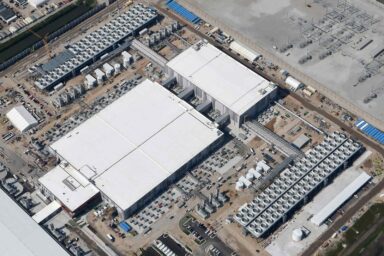New drones equipped with AI may be able to stop the Russian invasion. The downside is letting machines decide when and where to kill a human enemy.
|
Listen To This Story
|
KYIV, Ukraine — An ancient Soviet Lada automobile, reinforced with protective metal nets, drives up and down a test road near Kyiv. Nearby, a drone operator launches a small suicide drone. It swiftly takes flight, heading toward the vehicle. The group monitors its progress on a small screen.
“Try from 200 meters with a big dive,” says an employee of The Fourth Law (TFL), a Ukrainian weapons-tech manufacturer, as the team runs test scenarios to improve its AI system.
The drone operator locks onto the car. A green marker at the center of the screen turns red. Now, the drone takes over. Acting autonomously, it adjusts its flight path and dives toward the car. Just before impact, the operator takes control and aborts the attack in the nick of time to save the Lada for the next round of tests.
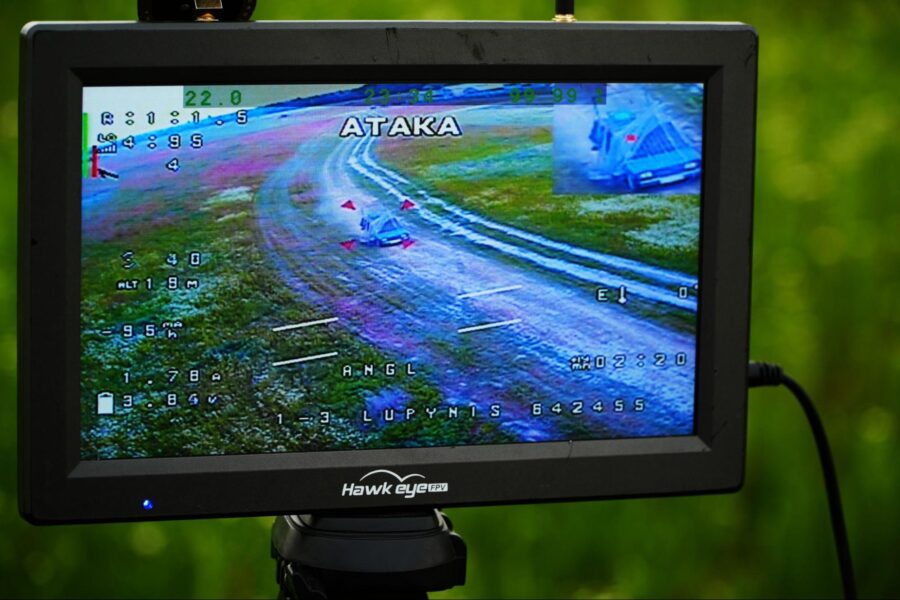
In the past, Russian electronic warfare systems along Ukraine’s front line frequently cut the connection between drones and their operators. “With this system, the Russians can’t hide,” explains Denys, an engineer at TFL, speaking to WhoWhatWhy.
TFL is one of several private companies developing new drone technologies for Ukraine’s military, in what is quickly turning into a full-fledged technological war. In its constant battle to stop the Russians, Ukraine is betting on cutting-edge autonomous systems that outmaneuver electronic interference and deliver precision strikes..
The system already enables a drone to independently differentiate between different kinds of vehicles. It can tell the difference between a truck, a decoy, and a tank. “We have a lot more in the pipeline,” says Denys. “In the future, we will see drones take off and do the job on their own. Let’s hope that it will stop the Russians.”
A War of Innovation
Russia’s army outnumbers Ukraine’s on the battlefield, and Vladimir Putin’s military constantly probes for weaknesses along the front. Ukraine is counting on maintaining a technological edge to hold the line.
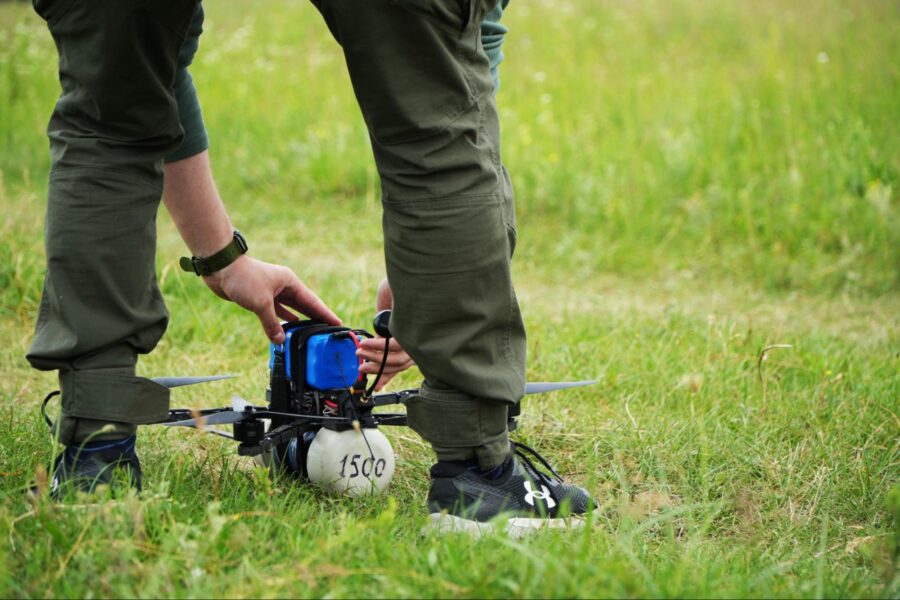
Drones are central to this strategy. Since 2022, small first-person view (FPV) drones controlled by operators have played an increasingly vital role. Three years ago, they were able to drop grenades on enemy positions. Soon after, suicide drones equipped with RPG warheads were introduced, and immediately began hunting targets along the front.
Social media was suddenly flooded with footage of burning tanks and the wreckage of armored vehicles. Today, any soldier who gets within 6 miles of the front is certain to be detected by an enemy drone. The rise of autonomous systems will dramatically increase the danger. Drones are already estimated to account for between 60 and 80 percent of all battlefield casualties.
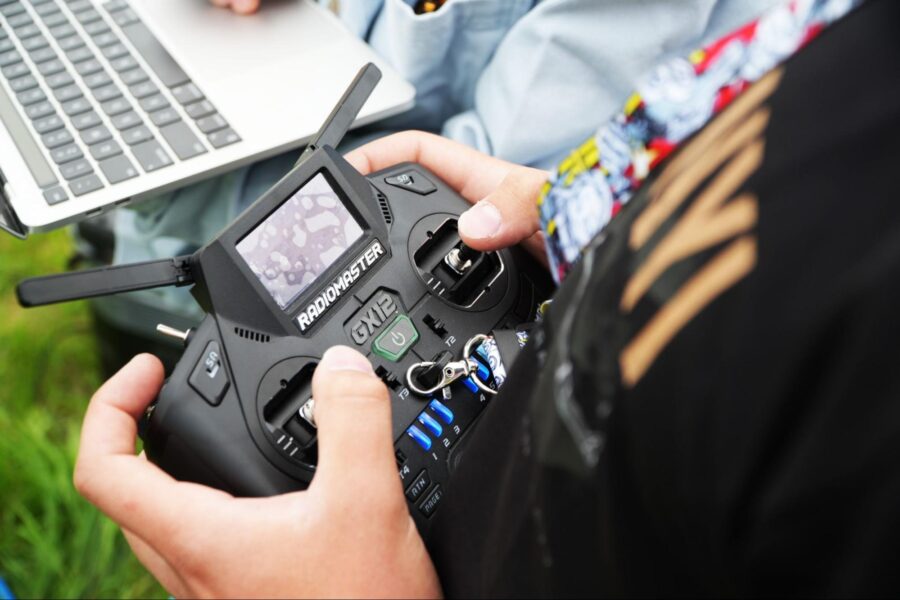
Uncertainty over Donald Trump’s support for Ukraine has forced Ukrainian innovators to turn to homegrown solutions.
TFL’s CEO, Yaroslav Azhnyuk — who formerly ran Petcube, a company that made interactive pet cameras — is proof, if any were needed, that the war has changed everything and everyone.
“This earlier generation of AI technology that is being applied to drones enables them to understand where they are navigating, where the targets of interest are,” Azhnyuk told WhoWhatWhy. He noted that much more is in development, especially drones that “can operate in GPS-denied environments and in areas with radio frequency jammers.”
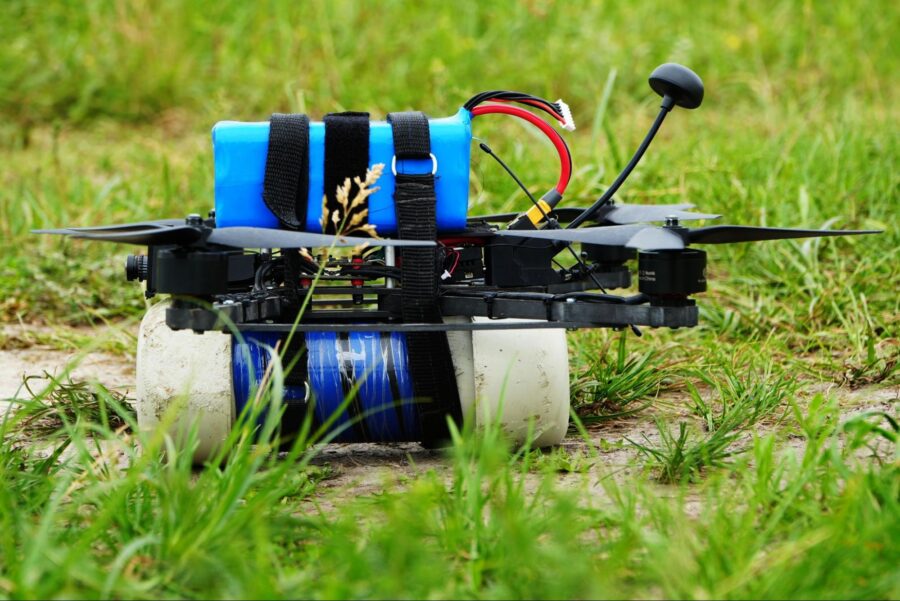
Azhnyuk said that TFL is already testing systems in which drones take off, identify targets, and autonomously pursue them. It’s only a matter of time before they’re deployed at the front.
The decision to let machines autonomously decide when and where to kill human beings is probably the most significant innovation to result from Putin’s impetuous “military operation” against Ukraine.
“If you have a massive amount of data from the millions of enemy soldiers and units acting on a battlefield, AI can analyse that and make decisions,” said Azhnyuk. “It can bomb and, for example, return home with no radio control whatsoever, as opposed to the systems which are being used now. We’re at the point where these technologies are being actively tested.”
Future systems will be able to learn and adapt to changing battlefield conditions, he said, adding that only about 10 percent of human-controlled suicide drones hit their targets. That is largely due to human error and jamming. Autonomous drones don’t face those issues.
Azhnyuk concluded:
I think that this year, there will be more and more sophistication and levels of such software. And since this is software, it is fundamentally different from hardware. It can be updated across the battlefield overnight and give you a massive change in capabilities. It means that capabilities on both sides will grow much faster than we have ever seen in military conflicts. It is the first war where software defines military capacity.
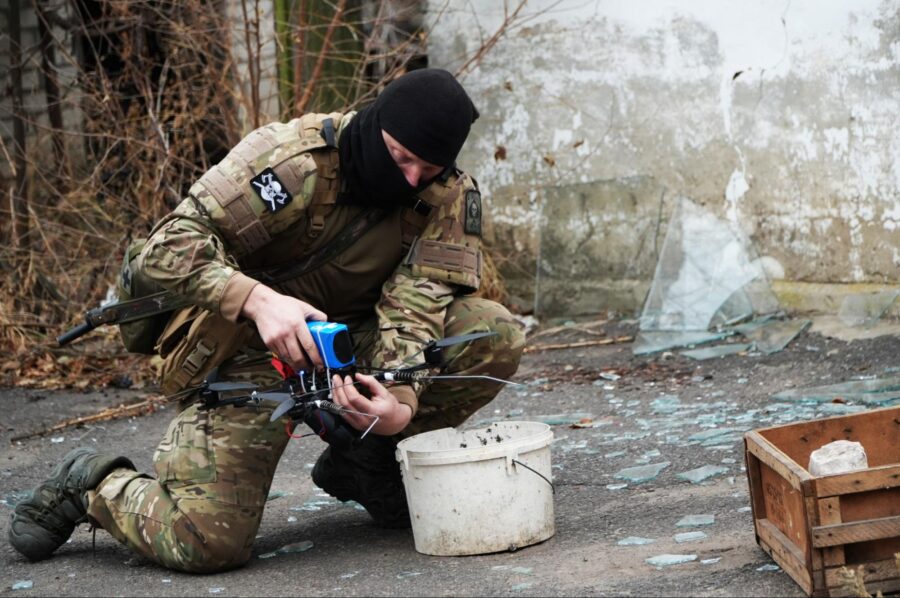
The AI Arms Race
Back in 2017, Putin famously declared, “Whoever becomes the leader in this sphere (AI) will become the ruler of the world.” Like Ukraine, Russia is investing heavily in autonomous technologies. The systems that WhoWhatWhy observed near Kyiv are already in use on the battlefield, but Azhnyuk is looking ahead to the next wave of innovation.
He argued that the West must accelerate support for Ukrainian tech companies to stay ahead and that the US should take particular notice:
A large country like China can certainly manufacture a couple of billion drones per year, and they can also develop autonomous technology, and they can also develop autonomous drone carriers. So imagine a fleet of 100,000 underwater drone carriers, each carrying hundreds or maybe a thousand smaller drones, each coordinated and flown with AI. Those are not some sci-fi things. That’s obviously where technology is heading.
I think we, in the democratic world, cannot afford to be lagging behind. You know, we’ve seen what barbarians have done here, and I’m concerned that Western civilization might fall once again if we’re not vigilant.
Robert E. Hamilton, a former senior fellow and head of research at the Foreign Policy Research Institute’s Eurasia Program, isn’t sure that the US is learning enough from the war in Ukraine. He has a 30-year career in the US Army behind him in positions such as Eurasian Foreign Area Studies Officer, a euphemism for intelligence work.
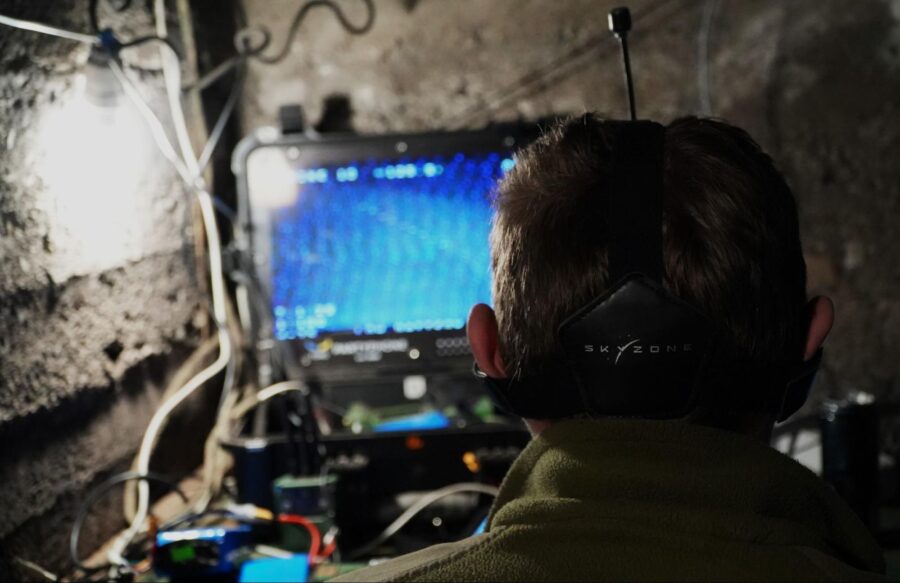
“The US Army is not learning as much as it could, even though it has the most to learn. It is probably due to institutional arrogance — thinking that we will not fight like them. But we must remember that neither Ukraine nor Russia expected to fight this way,” Hamilton said, warning it could become a serious issue for US forces in a prolonged war.
He noted that in a conflict over Taiwan, Chinese drones could pose a major threat to both Taiwanese and American forces if they manage to get a foothold on the island. He adds:
What we see in Ukraine is a changing of the character of war. It is changing on the ground due to these drones, and you are also seeing unmanned ground vehicles now in Ukraine. Russia and Ukraine are the leading drone countries in the world.
Ukraine’s Dilemma
Recently, several EU nations began investing directly in Ukraine’s defense industry to boost production. Hamilton estimates that the industry is operating at just 30 to 50 percent of its potential. Lack of funding is the main barrier, one that some European countries are now trying to address. Autonomous AI-powered drones could dramatically shift the balance on the battlefield, but only if either side can scale production.
“Russia is already operating at full capacity, so I am not sure that they have room to expand without building new factories, and they have problems with labor shortages,” said Hamilton. “But for Ukraine to make a difference, they need to scale this a lot.”
Another major challenge for Ukraine is the ethical dilemma in using autonomous systems. Hamilton warns of serious consequences if drones were to cause unintended civilian casualties.
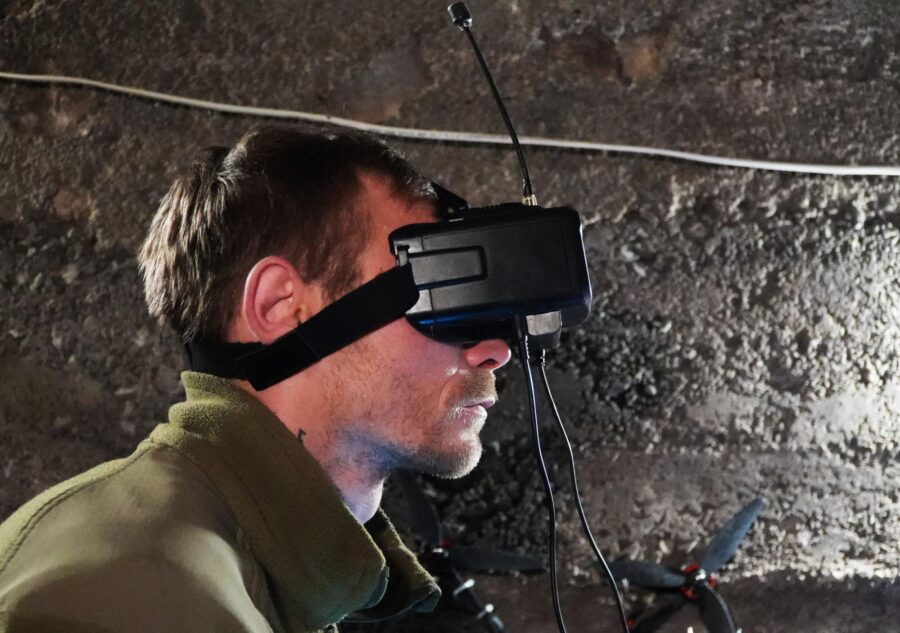
“You must consider the law. The question is whether these drones can be trained to decide if civilians are too close to a legitimate target,” Hamilton said. “Ukraine could face problems with its allies if videos of strikes on civilians emerge. Russia, on the other hand, doesn’t care at all about this. Ukraine, in contrast, needs to be worried.”
While many people believe autonomous drones can totally change the battlefield, Hamilton remains skeptical. He argues that history tells a different story — one example is the Turkish Bayraktar TB2 drone, which Ukraine operated at the beginning of the war.
“We didn’t know now how this could be countered. But eventually, a defense would emerge,” Hamilton said. “In 2022, in the early stages of the war, the Bayraktar TB2 drone was effective but only for a short while, until Russia figured out how to shoot them down.”
‘We Need Money’
Back at the training field near Kyiv, Denys stresses that nothing is impossible if TFL and other Ukrainian companies get the funding they need.
“Honestly, we just need more money. We can scale our development if we get more funding. We need more investments from the EU and the US,” he says.
The team runs multiple test scenarios, with the drone approaching the Lada from different angles. The system is nearly impossible to evade. On the battlefield, Russian soldiers would have only two options: shoot the drone down with a shotgun or outrun it.
“But they won’t see or hear it until that’s almost impossible,” Denys says. “I don’t think people understand how much artificial intelligence will change everything. It’s like the internet 30 years ago.”




